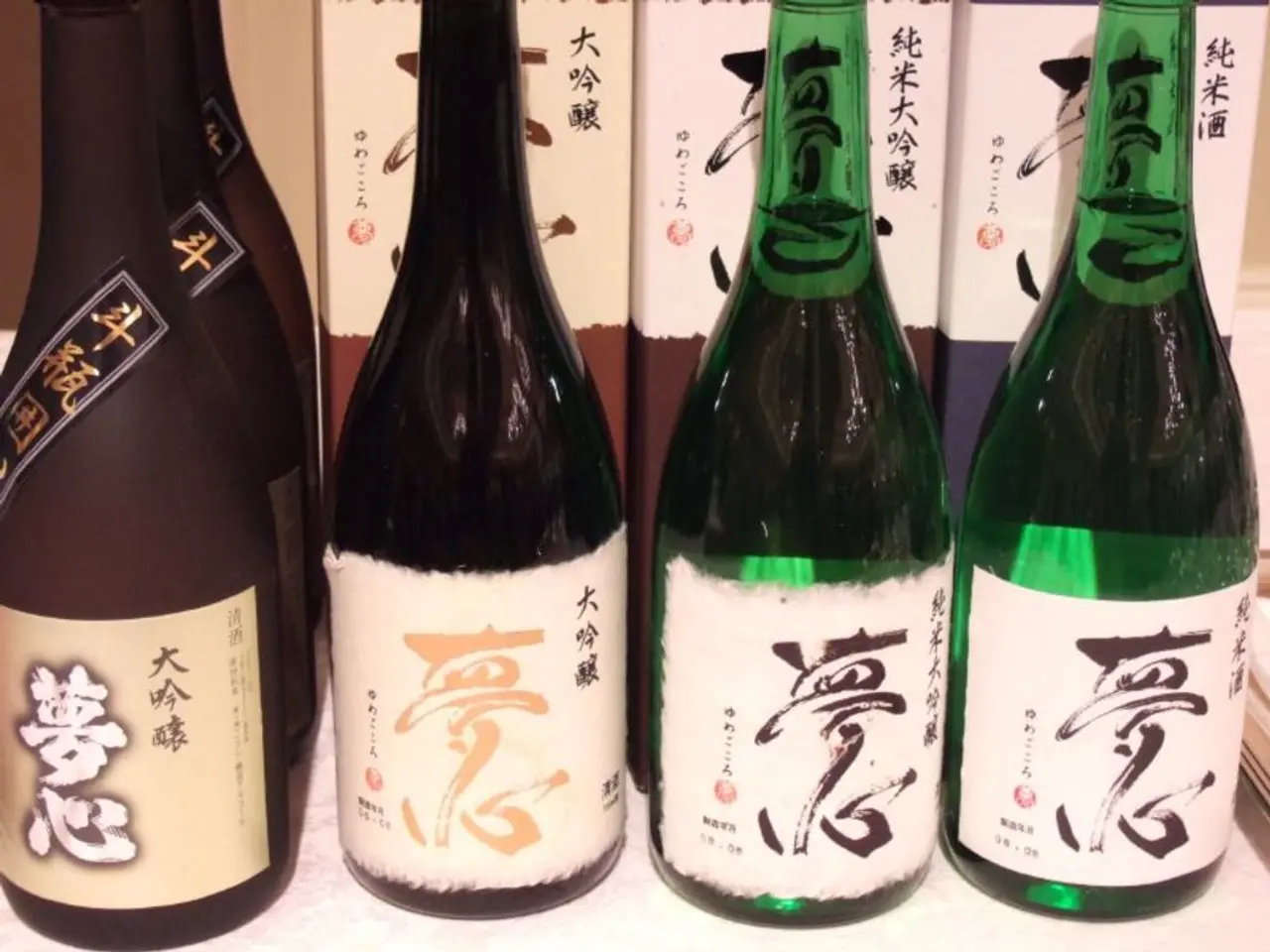Chemical compound TFA detected in European winery products
Trifluoroacetic acid (TFA), a persistent environmental pollutant, is increasingly being detected in European water sources, including wines, cereals, and drinking water. This compound, often referred to as a "forever chemical," is primarily formed via the breakdown of other chemicals known as Per- and Polyfluoroalkyl Substances (PFAS) [1][2].
Health Implications of TFA in European Wines
TFA is highly stable and degrades extremely slowly, leading to cumulative exposure via water, food, and beverages like wine. While current authorities state there are no confirmed adverse health effects from TFA consumption at present levels, some research and environmental groups express concern over long-term effects on humans, including potential reproductive toxicity [3]. German toxicological studies suggest TFA may be classified as toxic to reproduction, raising concern about lifelong low-level exposure through nutrition and drinking water [2][3]. However, the precise level at which TFA becomes harmful to humans remains under investigation [3].
Regulatory Status in Europe
The EU has historically not included TFA in pesticide risk assessments, but growing evidence links PFAS pesticides to TFA formation and contamination of groundwater and agricultural products like wine [1]. Denmark has taken a pioneering regulatory step by banning 23 PFAS-containing pesticides due to their role in polluting groundwater with TFA and other PFAS substances [1]. The European Environmental Bureau (EEB) and other advocacy groups urge the application of the precautionary principle to minimize TFA emissions and protect drinking water, calling for stricter regulation of PFAS-linked substances, including pesticides that lead to TFA formation [2]. However, pesticides are still one of the scarce applications currently exempt from the proposed EU-wide PFAS restrictions, complicating regulatory control [2].
TFA limits in public drinking water vary significantly across EU countries; some member states tolerate detectable levels while others have stricter limits, revealing the lack of harmonized regulation focused on TFA [4].
Summary Table
| Aspect | Details | |------------------------|----------------------------------------------------------| | Origin of TFA | Breakdown of PFAS pesticides, fluorinated gases, refrigerants | | Health risk | Possible reproductive toxicity; no consensus on safe exposure levels yet | | Environmental presence | Found widely in European water, wine, cereals | | Regulatory response | Denmark banned PFAS pesticides; EU discussions ongoing; pesticides partly exempted from PFAS restriction | | Drinking water limits | Vary across EU countries, no harmonized TFA standard |
Key Points
- TFA contamination in European wines reflects a broader environmental and food chain pollution by persistent PFAS chemicals.
- Health implications are uncertain but potentially serious with chronic, lifelong exposure.
- Regulatory efforts are increasing but remain incomplete and fragmented, with Denmark leading pesticide bans due to TFA concerns.
- Further research and precautionary regulatory measures are advocated to mitigate TFA exposure and environmental persistence.
In conclusion, while TFA is not yet universally regulated across Europe and the full health risks are still being studied, evidence of persistent contamination in wine and water has prompted some regulatory action, notably pesticide bans in Denmark and calls from environmental groups for stronger PFAS controls to limit TFA pollution [1][2][3][4].
[1] CEEV Statement on TFA in Wine [2] PAN Europe's Report on TFA in Wine [3] EFSA's Review of TFA Health-Based Reference Values [4] European Drinking Water Directive
- The compound, Trifluoroacetic acid (TFA), a persistent environmental pollutant, is increasingly detected in various European water sources, such as wines, cereals, and drinking water.
- Known as a "forever chemical," TFA is primarily formed via the breakdown of Per- and Polyfluoroalkyl Substances (PFAS).
- TFA has potential reproductive toxicity concerns for humans due to long-term exposure through nutrition and drinking water.
- Some research and environmental groups express concern over TFA's long-term effects on humans, although current authorities state there are no confirmed adverse health effects from TFA consumption at present levels.
- The precise level at which TFA becomes harmful to humans remains under investigation.
- The EU has historically not included TFA in pesticide risk assessments, but growing evidence links PFAS pesticides to TFA formation and contamination of groundwater and agricultural products like wine.
- Denmark has taken a pioneering regulatory step by banning 23 PFAS-containing pesticides due to their role in polluting groundwater with TFA and other PFAS substances.
- The European Environmental Bureau (EEB) and other advocacy groups urge the application of the precautionary principle to minimize TFA emissions and protect drinking water.
- TFA limits in public drinking water vary significantly across EU countries, indicating a lack of harmonized regulation focused on TFA.
- Chronic diseases, such as cancer, and respiratory conditions can be affected by environmental pollutants, and TFA's cumulative exposure via water, food, and beverages like wine could potentially contribute to these health conditions.
- The industry, particularly the agricultural sector and pesticide manufacturers, should take responsibility for reducing TFA pollution and ensuring the safety of food and beverages.
- Sustainable living, including the use of renewable energy, cardiovascular health, and skin conditions, among other aspects of health and wellness, would benefit from reduced pollution and greater regulation of persistent environmental pollutants like TFA.




